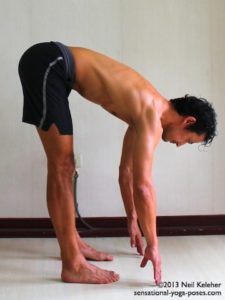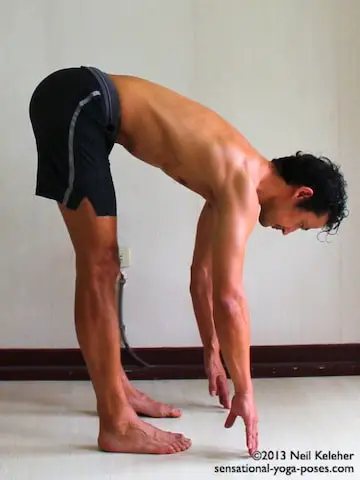Table of Contents
*This post may contain affiliate links. As an Amazon Associate we earn from qualifying purchases.
This article takes concepts from Yoga and Sport Psychology and combines them for a better understanding of how mindfulness, focus, and concentration are practiced and used both on and off the playing field. Golf will be the sport used but athletes across very different sports can apply this same concept.
Concentration and Yoga
 In yoga there is a term called Drishti. According to Yoga Journal, a yoga-based website, the term means focused gaze. Drishti is used to learn concentrated attention. To better understand the concept of Drishti, think of this example: The yoga teacher leads you in a balance pose and you find it very difficult. The teacher instructs you to find a spot to focus on as you do this and to breathe. In order to find balance in the pose you must concentrate very intently on one spot; it is as if you can think of nothing else. When you do this you can hold the pose. But when your focus wanders, such as when you look around the room to compare yourself to others, you cannot hold the pose. You wobble and come out of it. If you focus on one small spot, or your breath, you likely remain in the pose longer.
In yoga there is a term called Drishti. According to Yoga Journal, a yoga-based website, the term means focused gaze. Drishti is used to learn concentrated attention. To better understand the concept of Drishti, think of this example: The yoga teacher leads you in a balance pose and you find it very difficult. The teacher instructs you to find a spot to focus on as you do this and to breathe. In order to find balance in the pose you must concentrate very intently on one spot; it is as if you can think of nothing else. When you do this you can hold the pose. But when your focus wanders, such as when you look around the room to compare yourself to others, you cannot hold the pose. You wobble and come out of it. If you focus on one small spot, or your breath, you likely remain in the pose longer.
Concentration and Sport
How does this apply to sport? Read the description of Drishti again. It describes concentrated attention as also involving sense withdrawal. When an athlete is truly concerned with only one motion or one specific focus s/he typically has a one pointed focus, where those around the athlete or the weather do not act as distractions because the focus is so intense that these things fade. This is mindfulness. An athlete needs this silence of the mind in order to improve performance. This technique has been associated with the zone or flow.
Concentration, Mindfulness and Golf
A really good example of this idea applies to golf and what scientists at the University of Exeter call the “Quiet Eye” technique. The technique has been associated with improved putting. Quiet Eye technique involves focusing on the ball in a certain way for about two seconds before the club hits the ball. In order to do this the golfer is not adding his score in his head or looking around at his or her surroundings. Instead, he uses a concentrated gaze and watches the club stroke the back of the ball. This, one might argue, is Drishti.
Drishti is something most athletes probably do subconsciously already. However, most athletes need to engage in some type of practice to build better concentration or improved sustained concentration. It doesn’t matter if you practice concentration in the yoga room, on the golf course, or some other athletic venue. In any athletic environment, learning to control one’s focus through sight is vital to performing well. Luckily, there are many ways to practice. Consider adding this practice, either via yoga, or in your sport, to build your mental focus.
If you are interested in pursuing your interest in sport psychology than there are several options. First, be aware that in order to call yourself a psychologist of any type you must have a PhD in psychology and be licensed in the state where you practice. Second, you can pursue doctorate work in sport psychology and you should obtain the book, Directory of Graduate Programs in Applied Sport Psychology, to help in your search for information. For example, schools like Boston University or the University of Utah offer graduate degrees in the field. Some schools offer online programs, such as National University and Argosy University. You should determine if you want a Master’s degree in the field or a doctoral degree. There are differences in what services you can offer athletes depending on your degree. The website hosted by Association for Applied Sport Psychology (AASP) also lists tips for pursuing your interests in the field.


